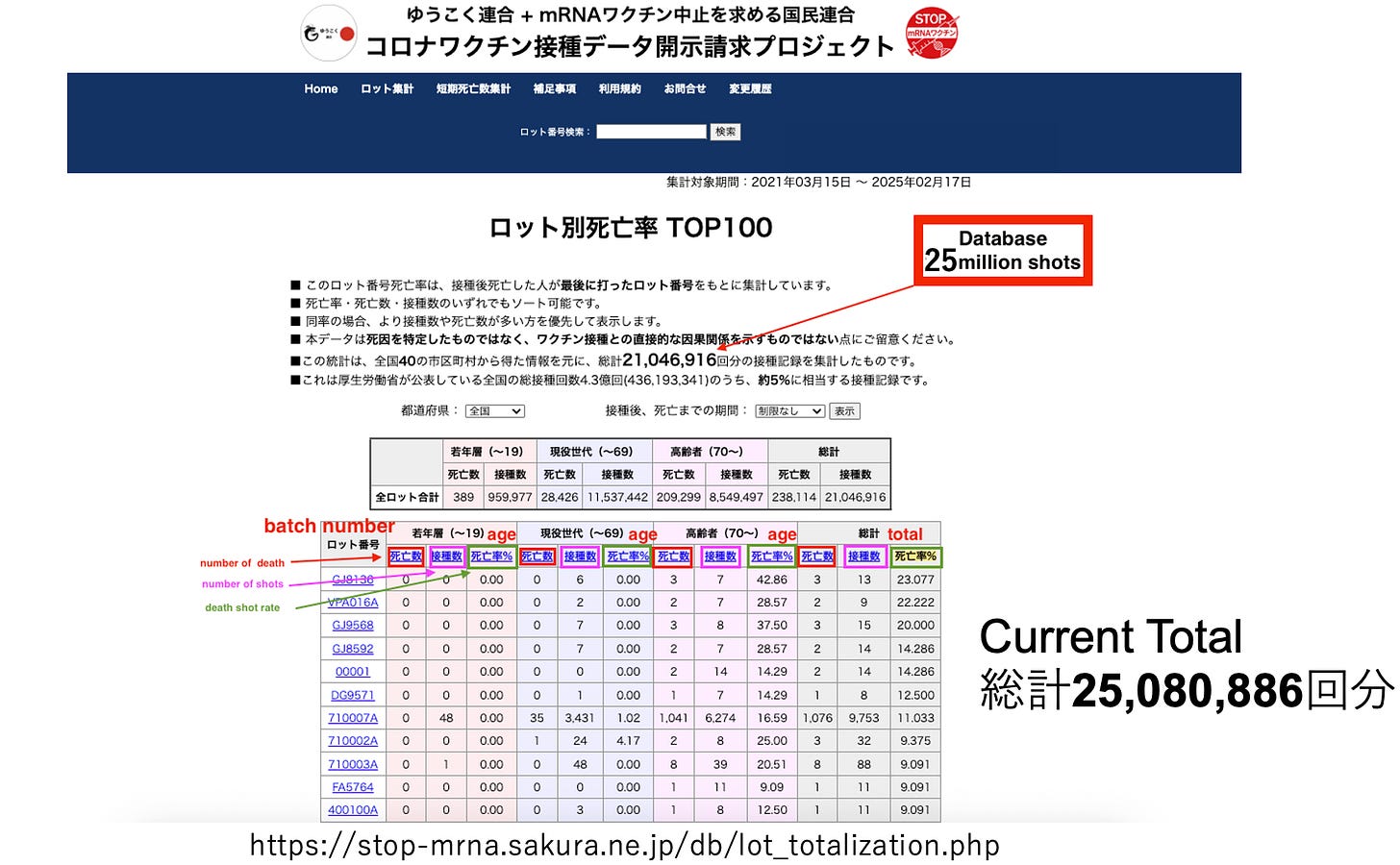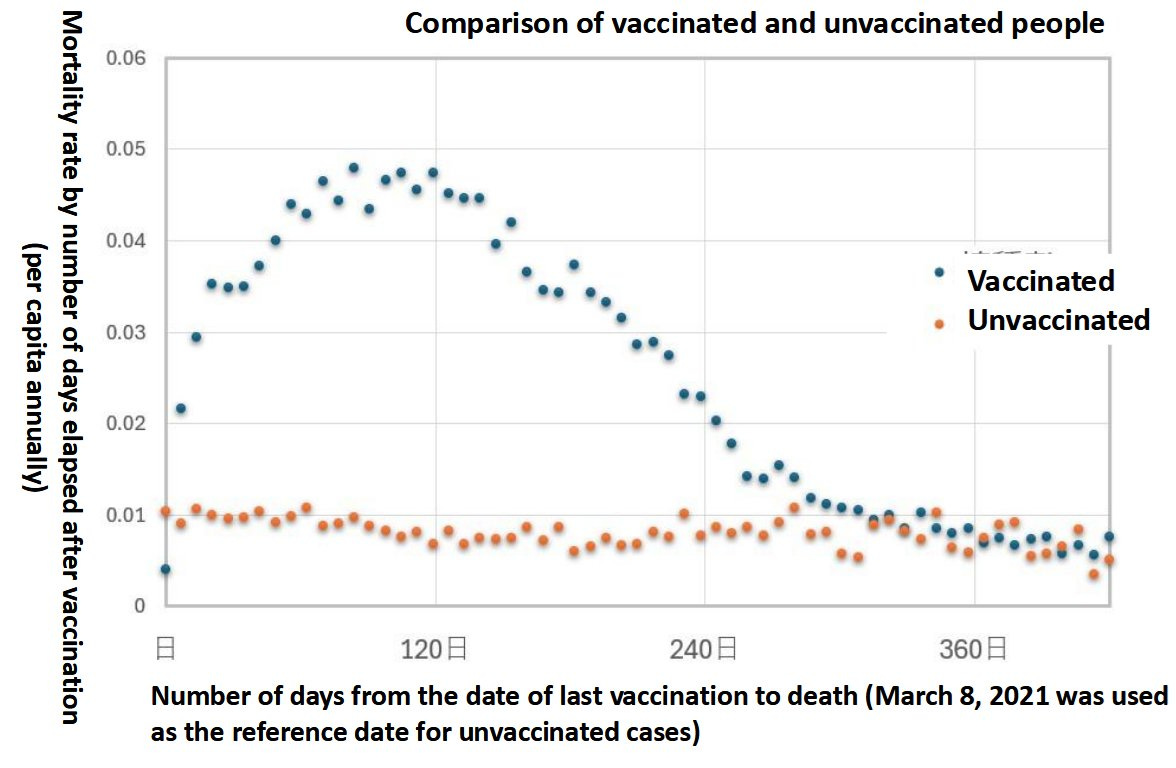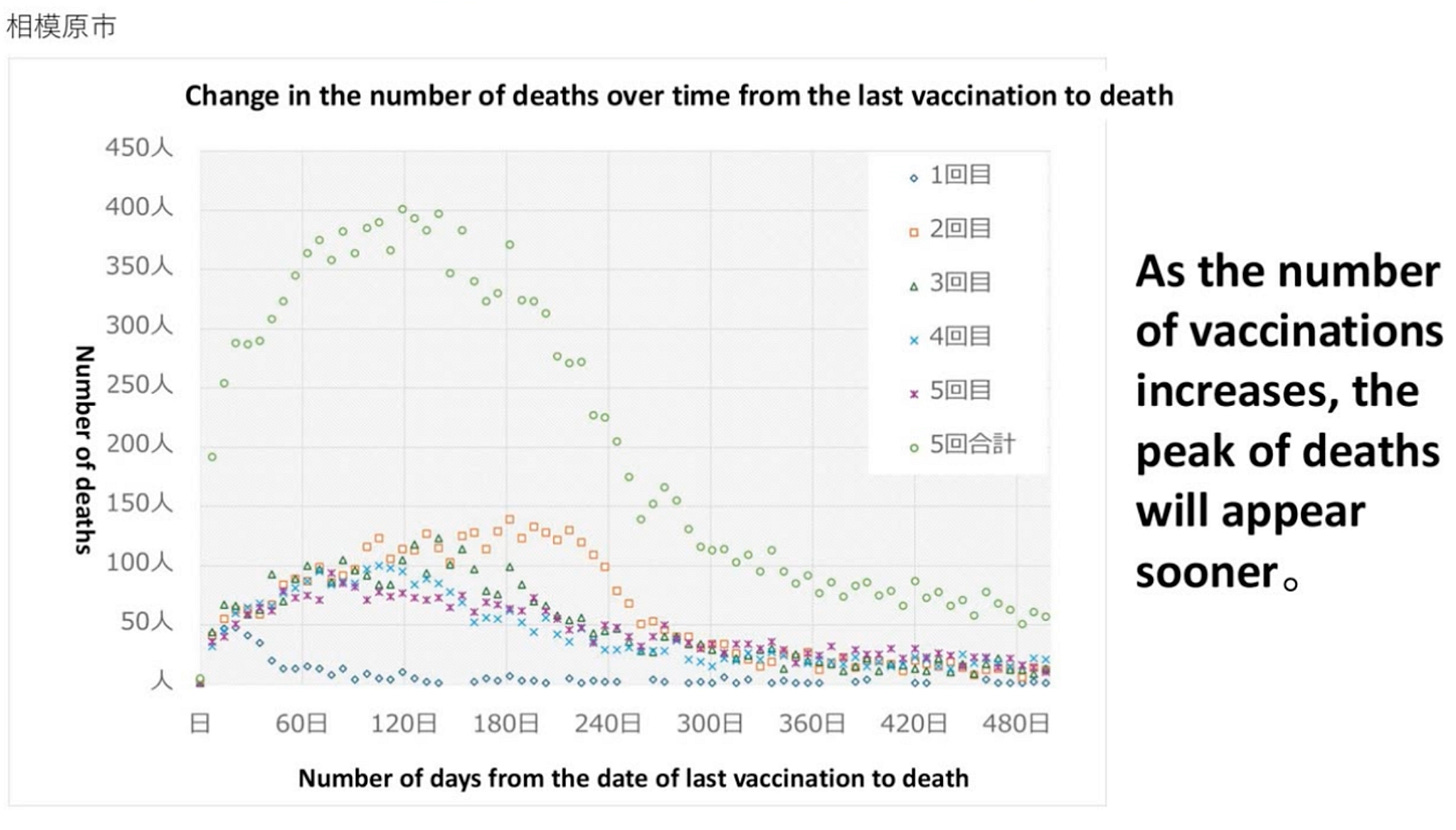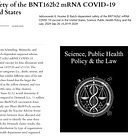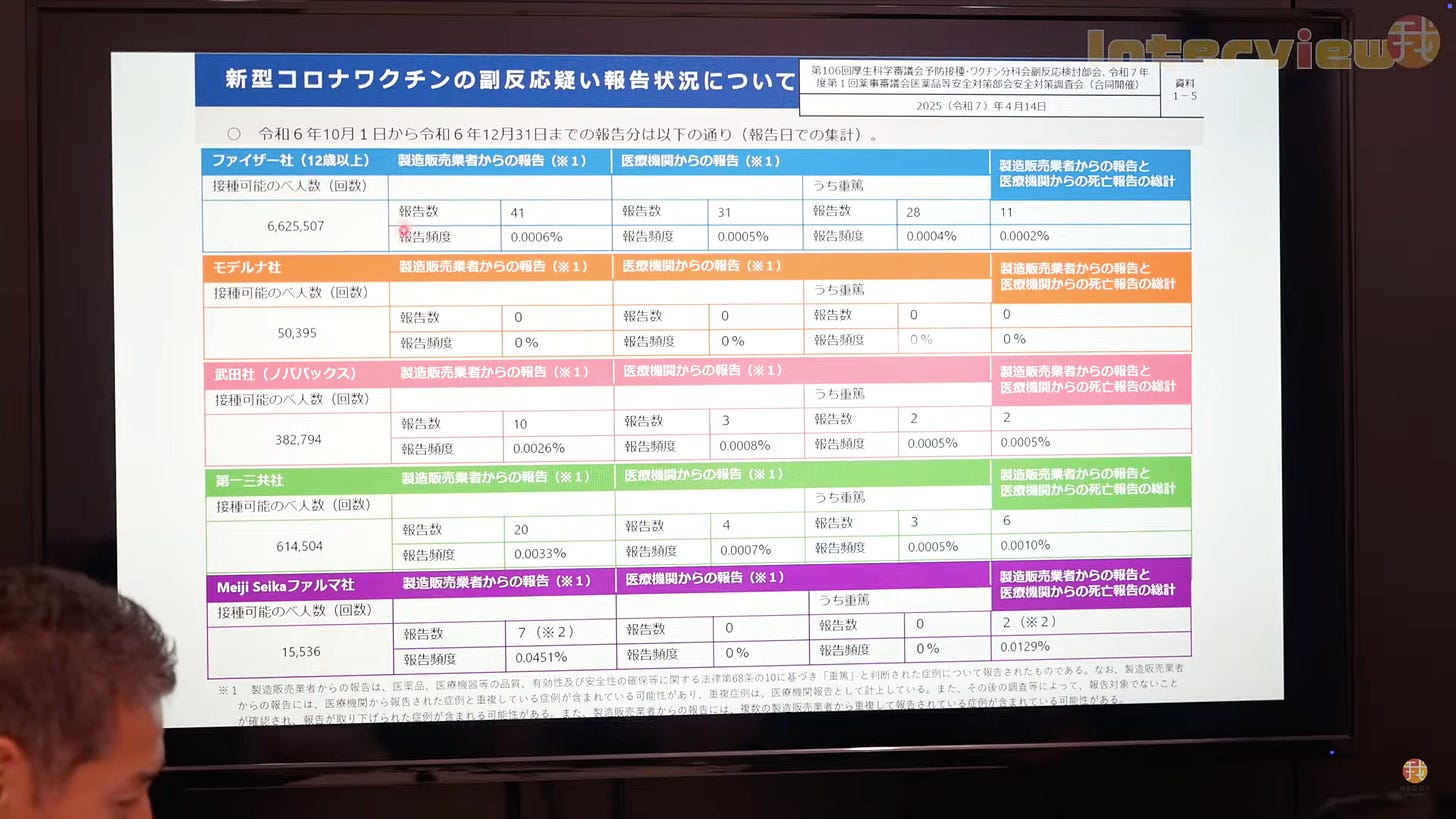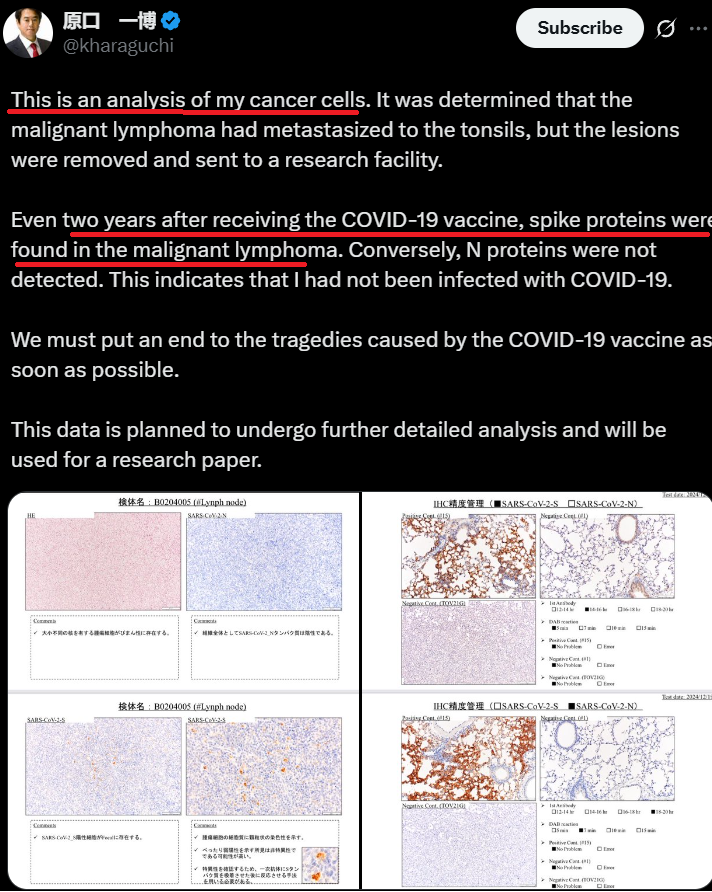The Japanese group United Citizens for Stopping mRNA Vaccines has obtained over 21 million official vaccination records through FOIA requests — one of the largest real-world datasets of its kind.
Analysis led by Professor Yasufumi Murakami (Tokyo University of Science) reveals a massive hidden death peak occurring 90–120 days after mRNA injection — with more doses linked to earlier deaths.
A few weeks ago, their team held a press conference outlining these worrisome findings:
Today, I was joined by independent researcher and journalist Masako Ganaha of Japan, a member of United Citizens for Stopping mRNA Vaccines, to discuss their groundbreaking data, the public’s rejection of self‑amplifying mRNA shots, and the ongoing fight to expose vaccine harms in Japan.
How the Data Were Collected
The Japanese government does not openly provide detailed, person-level vaccination and death data. To break through the secrecy, 350 volunteers across Japan filed local “FOIA”-style requests to municipal offices, obtaining official records that link batch numbers, vaccination dates, and death records (all-cause mortality).
Total records obtained so far: 25 million (as of today)
Fields include: date of vaccination, vaccine brand, batch number, age group, and whether the person has died (all-cause).
Data collection is ongoing as some municipalities continue to release records while others resist.
You can view the database here: https://stop-mrna.sakura.ne.jp/db/lot_totalization.php
Key Findings
1. Delayed Death Peak: 3–4 Months Post-Vaccination
Instead of deaths clustering immediately after injection, the highest mortality rate occurred 90–120 days post-shot.
In unvaccinated groups, no such peak was observed.
2. More Doses = Earlier Death Peak
In Sagamihara City data, the more injections received, the sooner the death peak appeared. Those with 4–5+ doses had mortality spikes appearing well before the 90-day mark.
3. Batch Variability
The data confirm massive lot-to-lot differences in adverse outcomes — corroborating the peer-reviewed literature.
Replicon mRNA Shot Rejected by the Public
While Japan’s Ministry of Health approved Meiji Seika Pharma’s self‑amplifying mRNA injection (developed in partnership with CSL Seqirus and Arcturus Therapeutics), uptake has been microscopic — just ~15,000 doses administered as of April 2025. Public awareness of their dangers, driven by the United Citizens group, likely prevented a mass uptake.
The manufacturer is now suing Congressman Kazuhiro Haraguchi, who developed lymphoma after three mRNA shots and found spike protein in his lymph cells long after recovery. He has been one of the few lawmakers demanding an end to mRNA vaccination.
Japanese Government Admits Deaths
As of June 2, 2025, the Japanese government has admitted over 1,000 deaths were caused by COVID-19 vaccination — yet mRNA products remain on the market.
Japan’s data prove that delayed post‑vaccination mortality is real — and largely invisible to current safety monitoring systems. Because many deaths occur months after injection, they are rarely linked to the vaccine, masking the true scope of harm. This blind spot has profound implications for mass mRNA injection programs.
Immediate withdrawal of these deadly injections is absolutely imperative.
Epidemiologist and Foundation Administrator, McCullough Foundation
www.mcculloughfnd.org
Please consider following both the McCullough Foundation and my personal account on X (formerly Twitter) for further content.



